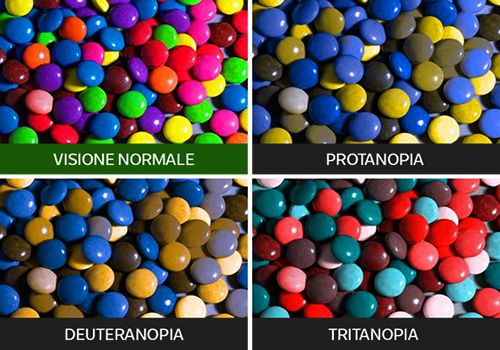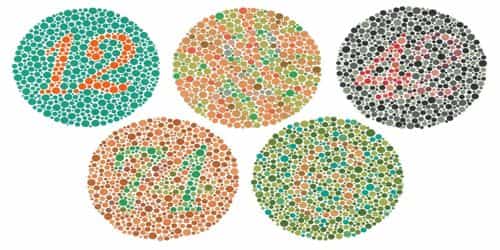Color blindness means a defect or lack of appreciation of one or more colors. About 8% of males and 0.4% of females show some defect of color vision. It is not an appearance of blindness at all, but a lack in the way you see color. Most color blind people are capable to see things as plainly as other people but they are unable to fully ‘see’ red, green or blue light.
Classification
It is divided into three following broad classes:
Anomalous trichromatism
Commonest variety – 5.6%, Anomalous trichromatism colors but an appreciation of one partial color is subnormal. The effects of anomalous trichromatic vision can range from almost normal color perception to almost total absence of perception of the ‘faulty’ color. This clan has three sublimes –
- Protanomaly (Partial Protanopia): Red vision is subnormal.
- Deuteranomaly (Partial deuteranpia): Green vision is subnormal, commonest (4.6%).
- Tritanomaly (Partial tritanopia) – Subnormal blue vision.

Fig: Types of Color Blindness
Dichromatic
Less common – 2.6%, Dichromate can see two colors but fail to see one. People suffering from protanopia are unable to perceive any ‘red’ light, those with deuteranopia are unable to perceive ‘green’ light and those with tritanopia are unable to perceive ‘blue’ light. It is of three types –
- Protanopia (Red blindness)
- Deuteranopia (Green Blindness)
- Tritanopia (Blue Blindness)
Monochromatic
This is the reverse of night blinder where the rods are all right but the color sensation of the cones is lost. People with monochromatic vision can see no color at all and their world consists of different shades of grey ranging from black to white, rather like only seeing the world on an old black and white television set. It may be regarded as total color blindness.















